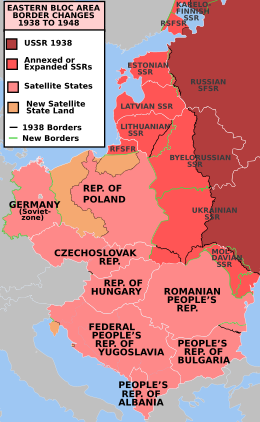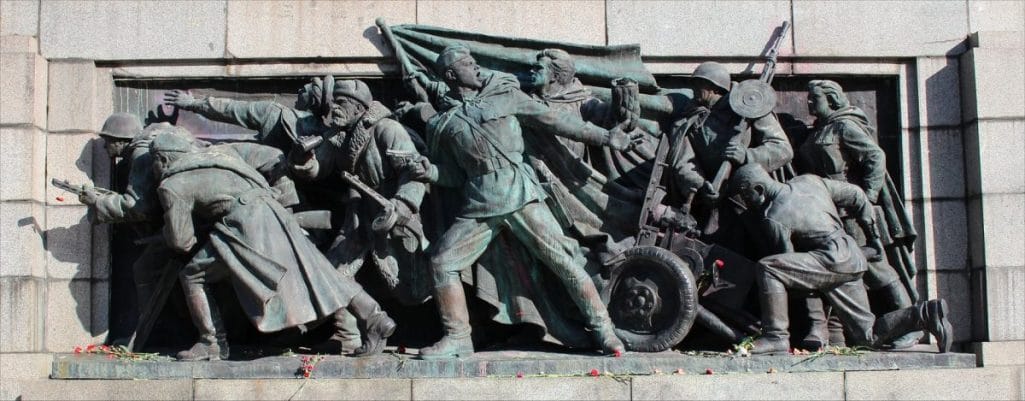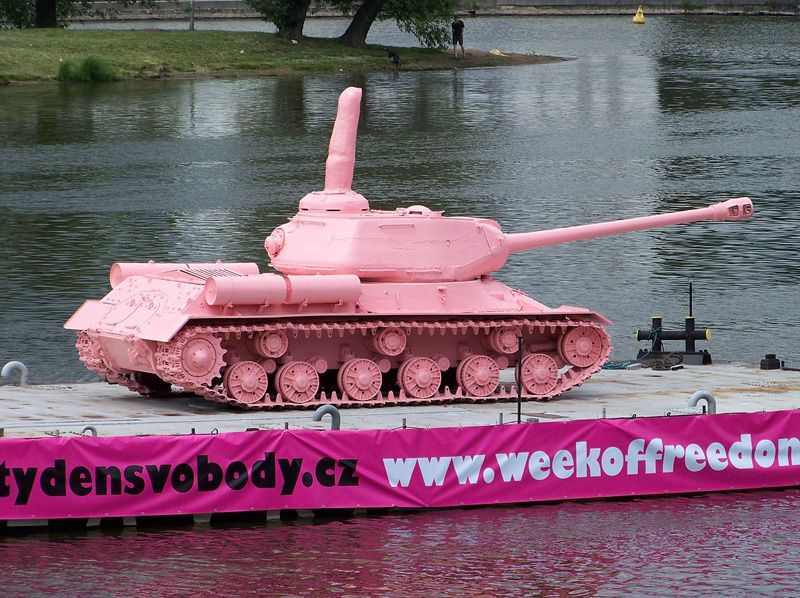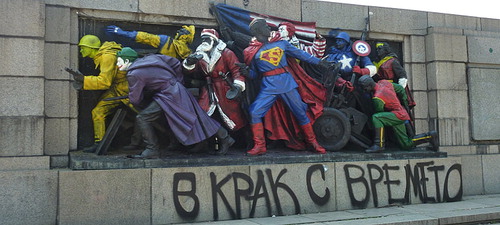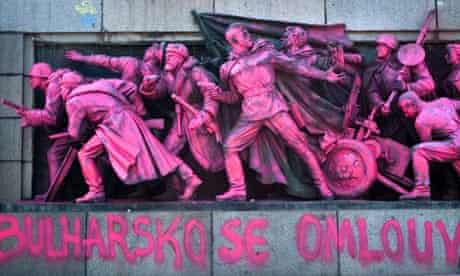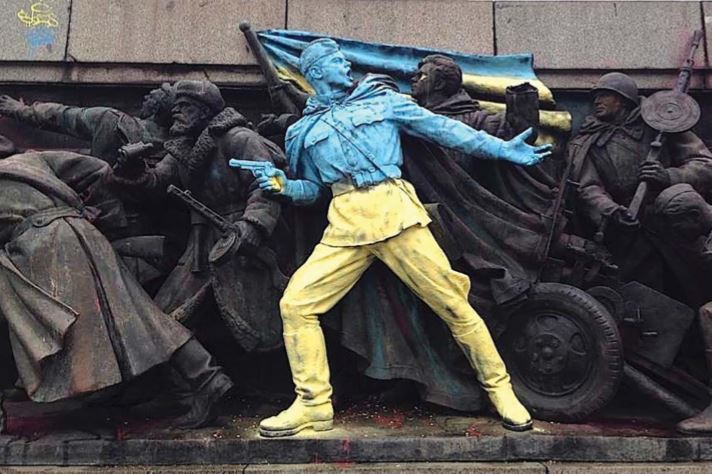#WTOStakeover Hello, I& #39;m @LaingGarrett, another one of @UofGlasgow& #39;s Conflict Archaeology and Heritage bunch. I& #39;ll be discussing a public reinterpretation of Soviet monuments. Let& #39;s dive right in, shall we?
1 Monuments have played a pivotal role in the modern perception of Russia. This is especially true of the Soviet monuments that dot the countries of the Eastern bloc. How has the public reinterpreted the meanings of Soviet monuments since the fall of the Soviet Union in 1991?
2 For the sake of brevity (and sanity) I will only be discussing one monument: The Monument to the Soviet Army in Sofia, Bulgaria. The statue was placed in a square in downtown Sofia in 1954 to honor the Red Army’s sacrifice in freeing the countries of Eastern Europe.
3 Portraying the Red Army in a “warrior-liberator” light was done to unite the diverse peoples and ideas that were now encompassed within the Soviet Union. This focus was an important aspect in formulating a cult-like obsession and reverence for Russia’s role in World War 2.
4 One aspect of what makes the public’s interaction with the monument in Bulgaria so interesting is the way in which it has been vandalized. Each vandalism has highlighted a certain political or social topic. However, recontextualizing monuments is not a new idea.
5 For example, an artist in Prague named David Černy painted the Soviet Tank Memorial pink in 1991. He also affixed a rude gesture in papier-mâché to the top. Adding further insult to injury, he paid to have a barge tow it to the Czech Republic Parliament building.
6 The vandals have addressed various political and social topics, both local and international. The first one in 2011 challenged the trend of Bulgarian Americanophilism by painting the figures as American cultural icons. The composition was called “In Step with the Times.”
7 The second time, the statue was painted pink on the 45th anniversary of the Prague Spring Revolt of 1968. The use of the pink paint was an homage to Cerny’s painted tank and acted as an apology to the Czech Republic for Bulgaria’s role in quashing the revolt.
8 The final vandalism occurred during the annexation of the Crimean Peninsula by the Russian Federation in 2014. Only the central figure and flag of the bas-relief were painted the national colors of the Ukraine. This sparseness is atypical and seems to be deliberate and thematic
9 The second aspect by which the public has redefined the meaning of the monument is by the events that have been held there. The annual Marijuana March, LGBT parade, and techno parade all take place in the square. Dimitrova describes these events as forms of civic appropriation.
10 Bulgaria is a country that continues to strictly control public space and its uses, so these events are meant to not only promote social causes, but also act as a form of resistance. The third way the monuments are redefined is by "appropriation through inhabitation."
11 Appropriation through inhabitation describes a phenomenon where the square and monument have become a popular gathering spot for the youth of Sofia. What was once an installation which celebrated the sacrifice the Red Army has become a relic of generational importance.
12 This case study has (hopefully) provided a small look into how the public interacts with monuments in the modern era. The tradition of remolding the meaning of Soviet monuments to fit the political and social climate is one that will continue to evolve as time goes on.
Thank you so much for tuning in! I& #39;ll be sticking around for awhile to answer any questions you have. Don& #39;t go too far, because @sbschwartz_ is up next at 18:00 (BST) to discuss online genocide museums.

 Read on Twitter
Read on Twitter